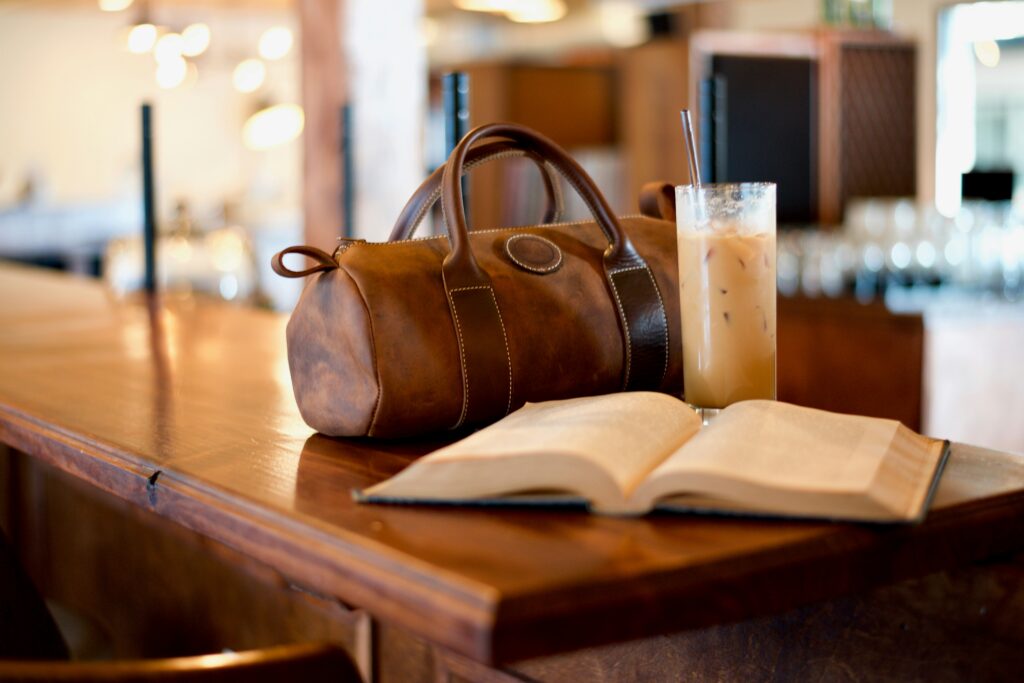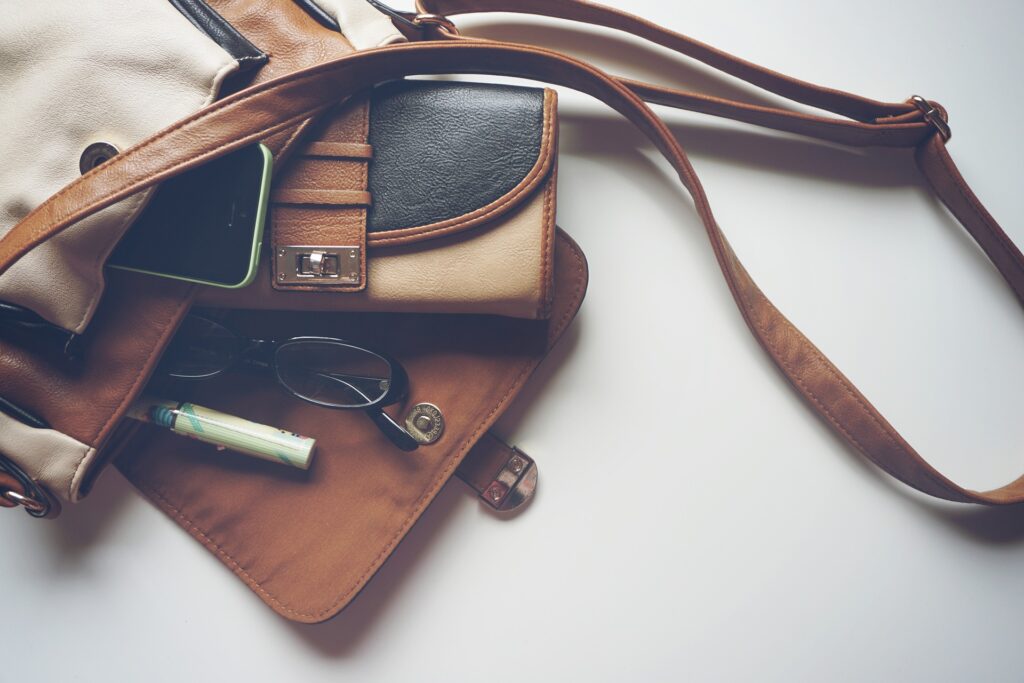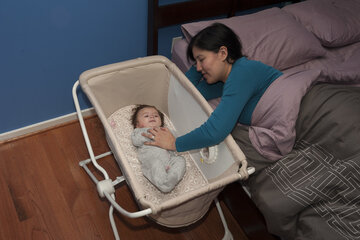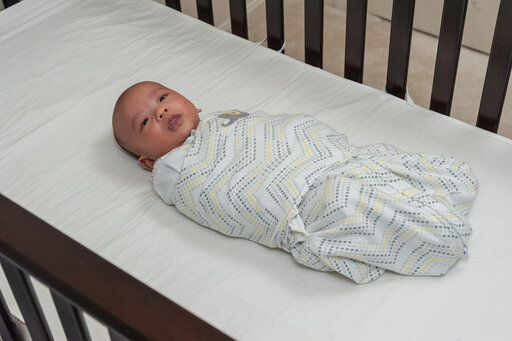
Are you a new parent feeling overwhelmed with the thought of What to Pack in a Newborn Diaper Bag? You’re not alone! Our comprehensive guide delves deep into everything you need to know about filling the perfect diaper bag for your little one.
We’ll provide an extensive checklist of essential items to ensure that you’re fully prepared for any outing, whether it’s a quick trip to the store or a full day out.
Begin with the basics: we’ll cover the must-have essentials like diapers and wipes, discussing the ideal quantities to bring along.
Learn about choosing the right type of diaper, and discover the benefits of carrying a portable changing pad for those on-the-go diaper changes.
We’ll also emphasize the importance of extra clothing—because we all know that messes happen! From onesies to socks, we’ll guide you on what to include to keep your baby comfortable and clean.
Feeding essentials are crucial too, whether you’re breastfeeding or bottle-feeding. Find out what to pack, including bottles, formula, breast milk storage bags, or nursing covers.
We’ll also touch on snacks for older siblings, making it easier to care for the whole family during your outings.
Beyond these necessities, we’ll discuss comfort items like pacifiers and favorite toys that can soothe your baby while out and about.
Don’t forget about the importance of safety and health—our guide will suggest a small first-aid kit, hand sanitizer, and other health essentials to ensure you’re ready for any unexpected situations.
Organizing your diaper bag is just as important as what you put inside it. We’ll share smart packing strategies that maximize space and keep everything easily accessible, helping you find what you need without the stress.
You’ll learn how to differentiate between items needed for short trips versus longer outings, ensuring that you’re never caught off guard.
With our expert tips and in-depth information, you’ll transform your diaper bag into a well-organized lifesaver, making every outing with your newborn enjoyable
and stress-free. Say goodbye to the chaos of last-minute packing and hello to confident, on-the-go parenting!
What to Pack in a Newborn Diaper Bag & Diaper Bag Packing List
Essentials
1 Diapers (enough for a few hours plus extras)
2 Baby Wipes (travel-sized pack)
3 Changing Pad (portable)
4 Plastic Bags (for soiled diapers or dirty clothes)
Clothing
1 xtra Outfits (onesie, pants, socks)
2 Hat (for sun protection or warmth)
3 Light Jacket (seasonal)
Feeding Supplies
1 Bottles (pre-filled or empty)
2 Formula (in a dispenser or pre-measured containers)
3 Breast Milk Storage Bags (if breastfeeding)
4 Nursing Cover (for breastfeeding in public)
5 Bibs (for feeding)
6 Baby Food (jars or pouches)
7 Utensils (spoons and a bowl)
Tips for Packing a Diaper Bag

Pressing a diaper sack might appear clear, but with so numerous things to consider, it can rapidly gotten to be overpowering.
A well-packed diaper pack is basic for smooth trips with your small one. Here are a few common tips to offer assistance to you pack productively and guarantee you have everything you require for any adventure.
Begin with the Basics
Before plunging into pressing, make a list of the fundamental things you require for your infant. Begin with the essentials: diapers, wipes, a changing cushion, and additional clothing.
By distinguishing these must-haves, you can guarantee that your sack has the foundational things for diaper changes and common care.
Organize by Category
Keep your diaper sack organized by gathering comparative things together. Utilize little pockets or zip-top packs to categorize things such as:
Diapering Supplies: Diapers, wipes, changing cushion, and diaper hasty cream.
Feeding Fundamentals: Bottles, equation, child nourishment, chin-wipers, and utensils.
Comfort Things: Pacifiers, toys, and blankets.
Health and Security: First-aid pack, hand sanitizer, and tissues.
Organizing by category permits you to rapidly discover what you require without scrounging through a chaotic bag.
Pack Keenly for Space
Diaper packs can fill up rapidly, so pressing productively is key. Consider the taking-after strategies:
Roll Dress: Rolling instead of collapsing dress spares space and makes a difference in anticipating wrinkles. use Travel-Sized Holders: For things like moisturizer or diaper cream, utilize travel-sized holders to spare space.
Prioritize Lightweight Things: As it were pack what you require, and maintain a strategic distance from bringing additional things that you might not use.
Arrange for Diverse Scenarios
Think about the sorts of excursions you’ll be doing. Are you going for a speedy trip to the basic supply store, a day at the stop, or a longer visit to relatives?
Alter your pressing based on these scenarios. For shorter excursions, you might as it were require a couple of diapers and a little nibble, whereas longer trips may require more supplies and food.
Consider Your Baby’s Age and Needs
As your child develops, their needs will alter, so tailor your pressing in like manner. For newborn children, you might require more bottles and diapers, whereas a little child may require snacks, toys, and an additional set of clothing for spills.
Keep in intellect any particular things your child appreciates, like a favorite toy or cover, to offer assistance and keep them comfortable amid outings.
Don’t Disregard Approximately Yourself
It’s simple to center exclusively on your baby’s needs, but don’t forget to pack a few basics for yourself as well. Incorporate things like a water bottle, snacks, your phone charger, and maybe a little notepad for writing down updates or notes.
Keeping yourself arranged guarantees that you can care for your infant without dismissing your possess needs.
Keep It Clean
With a child comes a part of messes, so having a clean diaper pack is vital. Incorporate a little plastic sack for arranging grimy diapers or dresses, and consider pressing a damp sack to contain dirtied things until you can wash them.
Frequently check and clean out your diaper sack to evacuate any lapsed things or pointless clutter.
Audit and Alter Regularly
As your child develops, their needs will alter, so make it a propensity to audit and alter the substance of your diaper sack frequently. Every few weeks, check for any things you can evacuate or supplant based on your excursions and your baby’s formative organize.
Diaper Bag Essentials to Shop
Diapers are essential items for parents and caregivers of infants and toddlers, designed to provide a convenient and effective way to manage a baby’s waste.
Typically made from absorbent materials, they come in both disposable and cloth varieties, each offering unique benefits.
Disposable diapers are popular for their convenience, as they can be easily thrown away after use, while cloth diapers are favored for their eco-friendliness and cost-effectiveness over time.
Diapers are designed to keep babies dry and comfortable, featuring a snug fit to prevent leaks and rashes. Many modern diapers also come with added features,
such as wetness indicators that change color when it’s time for a change and breathable materials that enhance airflow.
For parents, selecting the right diaper involves considering factors such as absorbency, size, and the baby’s skin sensitivity. Diaper changes can be a routine part of daily life, but with the right supplies and techniques, they can be quick and hassle-free.
Overall, diapers play a crucial role in ensuring the health and comfort of babies while providing peace of mind for caregivers.
Keep reading to know more about What to Pack in a Newborn Diaper Bag
Baby Wipes
Changing Pads are essential tools for parents and caregivers, providing a clean and comfortable surface for diaper changes. Designed specifically for use during changing times, these pads help create a safe and hygienic space for babies.
Typically made from soft, wipeable materials, changing pads often feature a waterproof backing to protect surfaces from spills and accidents.
Many models are padded for extra comfort, ensuring that your baby feels cozy during changes.
They come in various sizes and styles, including portable options that can be easily rolled up and tucked into a diaper bag for on-the-go use, as well as larger, stationary pads designed for use at home.
Using a changing pad not only makes the diaper-changing process more convenient but also helps to keep your baby comfortable and secure.
Some changing pads even come with built-in safety straps to prevent slipping and sliding. Additionally, many parents appreciate that these pads can be easily cleaned, either by wiping them down or tossing them in the wash, depending on the materials used.
Changing Pads
Changing Pads are essential tools for parents and caregivers, providing a clean and comfortable surface for diaper changes. Designed specifically for use during changing times, these pads help create a safe and hygienic space for babies.
Typically made from soft, wipeable materials, changing pads often feature a waterproof backing to protect surfaces from spills and accidents.
Many models are padded for extra comfort, ensuring that your baby feels cozy during changes. They come in various sizes and styles,
including portable options that can be easily rolled up and tucked into a diaper bag for on-the-go use, as well as larger, stationary pads designed for use at home.
Using a changing pad not only makes the diaper-changing process more convenient but also helps to keep your baby comfortable and secure. Some changing pads even come with built-in safety straps to prevent slipping and sliding.
Additionally, many parents appreciate that these pads can be easily cleaned, either by wiping them down or tossing them in the wash, depending on the materials used.
My New Article Best Baby Shampoo and Wash
Plastic Bags
Plastic Bags are simple yet versatile items that serve various purposes in everyday life, especially for parents and caregivers.
In the context of baby care, plastic bags are particularly useful for managing waste during outings, such as disposing of soiled diapers or storing dirty clothes.
Their lightweight and waterproof nature makes them ideal for containing messes and odors, ensuring that your diaper bag stays clean and organized.
These bags come in different sizes and thicknesses, with some specifically designed for diaper disposal, featuring odor-blocking capabilities to minimize unpleasant smells.
They can also be handy for packing snacks, keeping wet items separate, or organizing small accessories in your diaper bag.
While plastic bags are often considered disposable, it’s essential to use them responsibly and recycle them when possible.
Many parents find that keeping a few extra plastic bags in the diaper bag can be a lifesaver, providing peace of mind and convenience while navigating the challenges of parenting.
Overall, plastic bags are practical tools that contribute to the overall efficiency and cleanliness of diaper changes and daily outings.
Extra Outfits
Extra Outfits are a must-have for parents and caregivers, especially when it comes to taking care of infants and toddlers. Babies are prone to spills, messes,
and diaper leaks, making it essential to have spare clothing on hand to ensure they stay clean and comfortable throughout the day.
Typically, an extra outfit consists of a onesie or shirt, pants or shorts, and sometimes a pair of socks or a hat, depending on the weather.
These outfits are often chosen for their softness and ease of dressing, as well as their ability to withstand the wear and tear of daily life with a little one.
Parents often prefer clothes that are easy to put on and take off, as quick changes can be necessary in various situations.
Having an extra outfit readily available in the diaper bag or at home provides peace of mind, knowing that you can quickly change your baby if it becomes soiled or wet.
Whether it’s during an outing, a family gathering, or a playdate, an extra outfit can turn a potentially messy situation into a smooth and stress-free experience.
Overall, extra outfits are an essential part of baby care, ensuring your little one remains happy and comfortable no matter what the day brings.
Hats
Hats are essential accessories for babies that serve both functional and fashionable purposes. Designed to provide warmth, protection, and style, hats play a crucial role in keeping your little one comfortable in various weather conditions.
In cooler weather, hats help retain heat, preventing your baby’s delicate head from getting too cold. They often come in soft, cozy materials like cotton or wool, ensuring they are gentle on sensitive skin.
For sunny days, lightweight hats with brims are vital for shielding your baby’s face and neck from harmful UV rays. Many parents opt for hats with adjustable straps to keep them securely in place, even during active play.
Beyond their practical benefits, hats can also be a fun way to express your baby’s personality and style. They come in a wide variety of colors, patterns, and designs, from cute animal ears to trendy beanies, making them a favorite accessory for photos and outings.
Overall, hats are more than just an item of clothing; they are an essential part of baby gear that provides comfort and protection while adding a touch of charm to your baby’s outfit.
Whether you’re heading out for a stroll or bundling up for winter, a hat is a practical and adorable addition to your baby’s wardrobe.
Light Jackets
Light Jackets are practical and versatile garments that are essential for keeping babies comfortable in changing weather conditions.
Designed to provide just the right amount of warmth without overheating, light jackets are perfect for those chilly mornings or breezy afternoons when a heavier coat is unnecessary.
Typically made from soft, breathable materials like cotton, fleece, or lightweight nylon, light jackets are easy to put on and take off, making them ideal for busy parents on the go.
They often feature simple fastenings like zippers or snaps, allowing for quick adjustments and easy dressing. Many styles also include hoods to protect your baby’s head and ears from wind and light rain.
In addition to their functional benefits, light jackets come in a variety of colors and designs, allowing parents to choose options that suit their baby’s personality and style.
Whether you’re heading out for a walk in the park, visiting friends, or just running errands, a light jacket provides an extra layer of warmth without bulk, ensuring your little one stays cozy and protected.
Overall, a light jacket is a must-have item in any baby’s wardrobe, offering comfort, versatility, and style as your child explores the world around them.
Bottles
Bottles are essential feeding tools for infants and toddlers, designed to hold milk, formula, or water. They come in various shapes, sizes, and materials, catering to the unique needs of each child.
Whether you are breastfeeding and using a bottle to provide expressed milk or formula feeding, having the right bottles can make mealtime easier and more enjoyable.
Most bottles are made from either plastic or glass, with many featuring a wide neck for easy filling and cleaning. They typically come with nipples made from silicone or latex, designed to mimic the natural feel of breastfeeding.
Nipples are available in different flow rates, allowing parents to choose the best fit as their baby grows and develops feeding skills.
Bottles are designed with convenience in mind, often being dishwasher-safe and some even being microwave-safe for quick heating. Many parents appreciate bottles with anti-colic features that help reduce gas and discomfort during feeding.
Additionally, bottles can be equipped with sippy spouts as toddlers transition to self-feeding, making them a versatile addition to any child’s feeding routine.
Overall, bottles play a vital role in nurturing and bonding between parents and their little ones. They provide a reliable means of feeding and hydration while offering the flexibility needed for busy lifestyles, making them an indispensable part of baby care.
formula
The formula is a specially formulated product designed to provide essential nutrients for infants who are not breastfed or need supplementation.
Available in various types, including powdered, liquid concentrate, and ready-to-feed options, formula serves as a convenient alternative to breast milk,
ensuring that babies receive the necessary vitamins, minerals, and calories for healthy growth and development.
Infant formula is typically made from a combination of proteins, carbohydrates, fats, vitamins, and minerals, carefully balanced to closely resemble the nutritional composition of breast milk.
Many brands offer specialized formulas to cater to specific needs, such as hypoallergenic options for babies with sensitivities,
organic formulas made with natural ingredients, and formulas designed for premature or low-birth-weight infants.
Preparing the formula is straightforward, usually involving mixing the powder with water or using pre-mixed liquid options.
Parents often appreciate the convenience of formula feeding, as it allows multiple caregivers to feed the baby, promotes flexibility in feeding schedules, and provides a reliable solution for families who may face challenges with breastfeeding.
The formula also comes with guidelines for preparation and storage, ensuring that it is safe and healthy for babies.
Overall, the formula is a crucial resource for many families, offering a reliable way to nourish infants while supporting their growth and development during those important early months.
Nursing
Nursing Covers are versatile and practical accessories designed to provide privacy and comfort for breastfeeding mothers while feeding their babies in public or around others.
These covers are typically made from lightweight, breathable fabrics, allowing for airflow while still offering a shield against the view of onlookers.
Most nursing covers feature an open neck design or a rigid neckline, which allows mothers to maintain eye contact with their baby while feeding, ensuring both convenience and bonding during the nursing experience.
Many also come with adjustable straps or ties, making them easy to put on and remove, as well as secure in place.
Available in various colors, patterns, and styles, nursing covers cater to different tastes and preferences, allowing mothers to choose options that reflect their style.
Some covers are even designed to double as a car seat cover or a shopping cart cover, providing added value and versatility for parents on the go.
Using a nursing cover can help mothers feel more comfortable and confident while breastfeeding in public settings, offering a sense of modesty without sacrificing the ease of feeding.
Overall, nursing covers are a thoughtful and practical solution for breastfeeding mothers, promoting a positive nursing experience while encouraging mothers to feel empowered and at ease in their parenting journey
Bibs
Bibs are essential accessories for babies, designed to keep them clean and dry during mealtime. These practical garments come in various shapes, sizes, and materials, offering both functionality and style.
Bibs are typically worn around the neck, providing a protective barrier against spills, drools, and food messes that are common during feeding.
Made from soft, absorbent fabrics like cotton, terry cloth, or waterproof materials, bibs help to soak up liquids and catch crumbs, keeping a baby’s clothes clean and minimizing laundry.
They often feature adjustable fastenings, such as snaps or Velcro, making them easy to put on and take off as well as ensuring a secure fit that accommodates your growing baby.
In addition to their practical uses, bibs come in a wide array of colors, patterns, and designs, allowing parents to choose options that match their baby’s outfit or personal style.
Some bibs even come with fun designs or playful themes, making mealtime more enjoyable for little ones.
Bibs are not only useful during feeding but also for teething babies who tend to drool frequently. They can help keep the baby’s chest and clothing dry, preventing irritation from wetness.
Overall, bibs are a must-have item for any parent, combining practicality with a touch of fun to support the messy but delightful experience of feeding and caring for a baby.
Baby Food & Utensils
Baby Food is specially prepared nutrition designed for infants and young children as they transition from a liquid diet to solid foods.
It typically includes a variety of fruits, vegetables, grains, and proteins, providing essential nutrients to support healthy growth and development.
Baby food is available in different forms, including purees, jars, pouches, and snacks, catering to the diverse preferences and developmental stages of babies.
Commercially prepared baby food is often made with minimal ingredients, ensuring that it is gentle on a baby’s digestive system.
Many brands offer organic options, free from preservatives and artificial flavors, appealing to health-conscious parents.
Homemade baby food has also become increasingly popular, as parents look to create fresh, nutritious meals tailored to their baby’s tastes.
The texture of baby food is typically smooth or slightly chunky, designed to suit the developmental needs of infants.
As babies grow and become more accustomed to solids, parents can introduce more complex flavors and textures, helping to expand their child’s palate.
Many baby foods are fortified with vitamins and minerals, ensuring that babies receive adequate nutrition during this critical stage of their lives.
Overall, baby food plays a vital role in introducing solid foods, offering a convenient way for parents to provide balanced meals for their little ones.
It supports a baby’s exploration of flavors and textures while laying the foundation for healthy eating habits as they grow.
Visit our website to learn more about What to Pack in a Newborn Diaper Bag
Utensils are essential tools that facilitate mealtime for babies and toddlers as they transition to self-feeding. Specifically designed for little hands,
these utensils typically include spoons, forks, and sometimes knives, tailored to be safe and easy for young children to use.
Baby utensils are often made from lightweight, durable materials like plastic or silicone, which are easy to grip and gentle on developing gums.
Many spoons have soft, rounded edges to prevent injury and some feature ergonomically designed handles that fit comfortably in a child’s hand.
Utensils may also come in vibrant colors and fun shapes, making mealtime more engaging and encouraging toddlers to explore new foods.
As children grow and develop their motor skills, utensils play a crucial role in promoting independence at the table.
Parents often start with soft-tipped spoons for younger infants and gradually introduce forks and other utensils as their child’s coordination improves.
Some sets even include divided plates or bowls with suction bases to minimize spills and messes during mealtime.


Leave a Comment